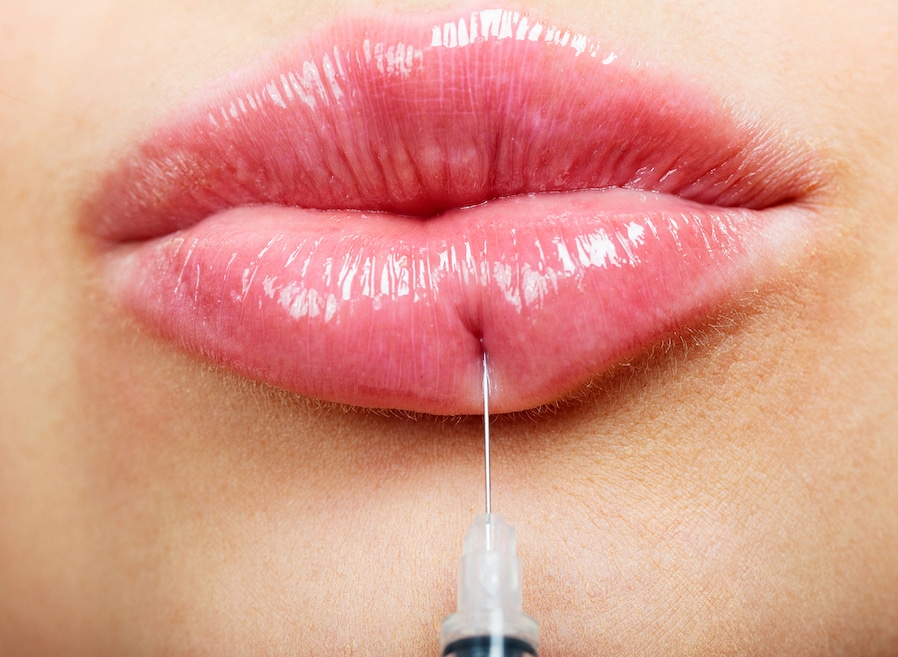Dermal fillers are small injections made to the soft tissue of the face which fill in various imperfections such as wrinkles, acne scarring, and uneven face structure.
As such, many individuals are interested in exploring dermal fillers to reduce the impact of imperfections and visible signs of aging. What they often find (even after a quick search) is that many different types of fillers exist, and seemingly, each brand has something different to offer.
Depending on your desired outcome, some fillers will be a better choice than others. This is especially true when attributes such as intensity, structure, and longevity are taken into account. To help make finding information on popular dermal fillers a little easier, we have compiled a guide on outlining the most popular and effective categories of filler in addition to the type of effect they are most likely to have.
Even though dermal fillers are made for cosmetic use, it is important to practice caution as you would with any other medical procedure. Use this guide to help inform your decision, but always consult with a trained healthcare provider before determining which is the best decision for you.
Do Dermal Fillers Lessen the Signs of Aging?
Dermal fillers act to fight the signs of aging in areas where we notice it most– the face. Most commonly, dermal fillers can be used to reduce the appearance of wrinkles such as Marionette Lines, eye and forehead wrinkles, and even deep Nasolabial wrinkles.
The 4 Types of Fillers
The ultimate success of dermal fillers rests in ensuring you choose the right material for the type of structure you would like to add to your skin. As the options for fillers are plentiful, this can sometimes be a challenging process and even involve some trial and error.
While all dermal fillers share some level of similarity in regaining lost facial volume, some materials are better for deep lines while others are better for mild firming. The following list reflects some of the most common FDA approved dermal filler brands, the materials they incorporate, in addition to the types of cosmetic procedures for which they are best suited.
- Hyaluronic Acid (HA) Wrinkle Fillers
Hyaluronic Acid is a naturally occurring sugar in the body which not only helps the skin maintain moisture, but also elasticity. Like collagen, the amount of HAs in our skin decreases as we age, causing changes in skin texture and creating an environment more prone to developing lines and wrinkles. HA based fillers come in several treasures depending on your needs. The more liquid the product, the slighter the filling effect, the more dense the liquid, the more striking. Similarly, thinner mixtures will not last as long as their thicker counterparts. HA based wrinkle fillers come in many forms from some of the most popular brands, including: Juvéderm, Restylane, and Belotero Balance. - Calcium Hydroxylapatite (CaHA)
Also a naturally occurring substance, Calcium Hydroxylapatite fillers work in much the same way as other fillers. The main difference between HAs and CaHAs is texture. Commonly, CaHA filler treatments are thicker than their HA counterparts. This results in a more prominent and longer lasting result. Generally speaking, these fillers are expected to last up to, and even past, 12 months. At the moment, the brand Radiesse offers an FDA approved CaHA filler. - Poly-L-Lactic Acid
Unlike the above two options, these types of fillers are fully synthetic and made to absorb into the body. They work by dissipating under the skin in the days following injections and stimulating your body’s ability to produce collagen on its own. Since collagen is what stimulates and maintains skin elasticity, using a product such as Poly-L-Lactic Acid is normally best suited for individuals who wish to eliminate deeper wrinkles. Due to the way this substance interacts with your body’s chemistry, the results last longer than many other types of treatment, usually stretching out for 1-2 years. Currently, the FDA has approved the brand Sculptra for this type of injectable filler. - Polymethylmethacrylate (PMMA)
Also a synthetic substance, these fillers are the most durable material on this list. Unlike the others which are either suspended within the skin or eventually absorbed, PMMA retains its shape indefinitely. It does this because its structure allows it to remain in small nanospheres which sit within the skin and are not absorbed over time. As such, these types of injections produce support and definition to the face, even in cases of severe lines, wrinkles, and deformation. At the moment, the FDA approved the brand Bellafill as a safe PMMA injection.
Concerns and Allergic Reactions
Even though dermal filler injections are generally regarded as safe and fade over time, you must always keep an eye out for potential allergic reactions.
Ranging from mild to moderate are symptoms such as itching, swelling, redness, and bruising at the site of the injection. These symptoms are normally superficial inconveniences that fade over a relatively short period of time, however, anytime side effects occur it is best to monitor them for any changes. This is because should the symptoms either not resolve or become worse, they might implicate a more serious set of side effects.
Unfortunately, the more severe reactions can create physical illness in addition to potential shifting of leaking of the wrinkle filler material itself. These types of reactions can include trauma at the injection site, nodules under the skin, and even leaking of the dermal filler.
For more information on plastic surgery, there are many resources available. Among the most comprehensive can be found through patient safety materials released by the American Society of Plastic Surgeons in addition to discussing your cosmetic options with your healthcare provider.
Finding a Dermal Filler Provider
Finding the right provider for your dermal fillers depends on the extent of change you desire. For cases of more involved restructuring, it is best to go to a board certified plastic surgeon. In cases where you would like to fill out thin lips or reduce the appearance of lines, going to a local provider can give you the results you desire at a cost effective rate.
Established in the 1980s, EVDP takes great pride in having clients receive the best dental care and the best service. If you are considering dermal fillers, don’t hesitate to give us a call at: 480-838-3033 so you can speak to a professional who can help answer your questions or set up an appointment.

